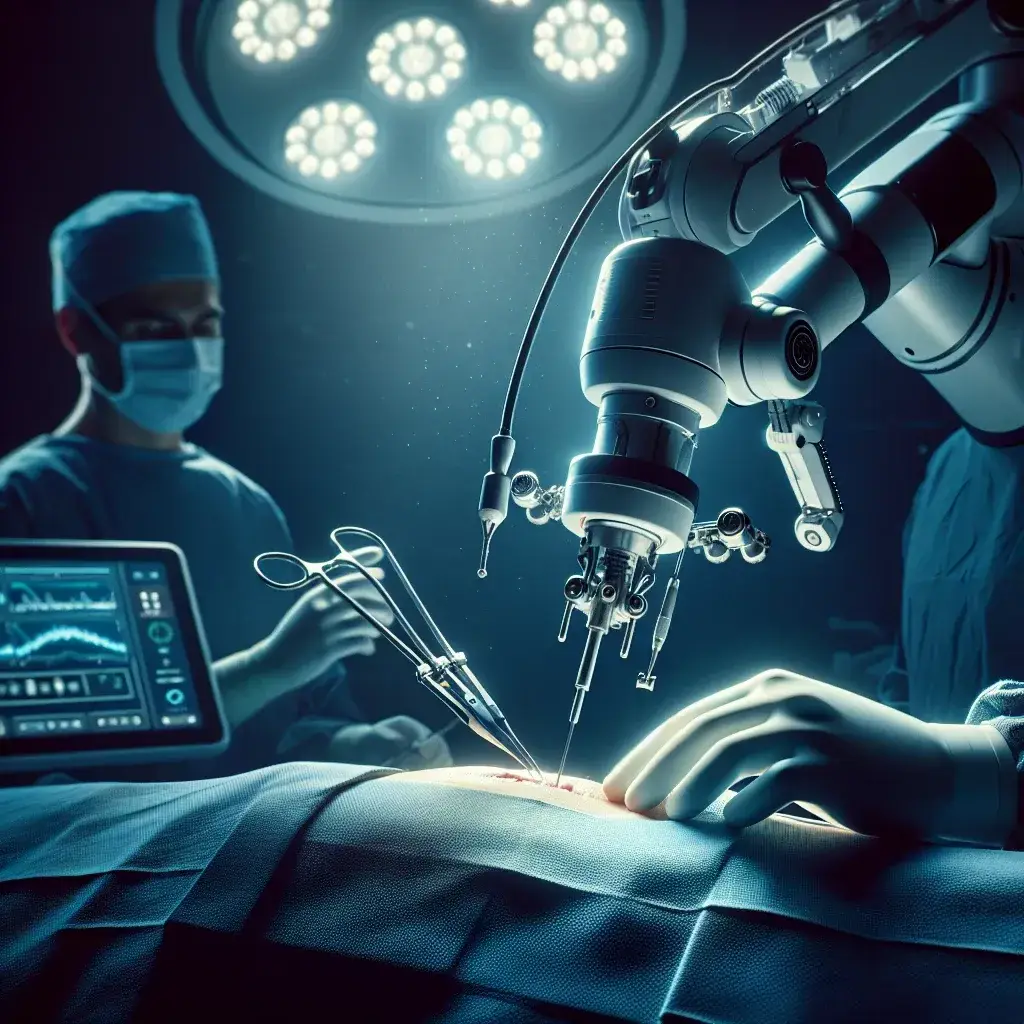Introduction
In recent years, the field of surgery has undergone a significant transformation due to technological advancements. One such innovation that has revolutionized surgical practices is teleoperated surgical arms equipped with force feedback systems. This article delves into the functionalities, historical context, and future potential of these systems, particularly focusing on MiroSurge and its contributions to surgical precision.
Understanding Teleoperated Surgical Arms
Teleoperated surgical arms are robotic systems that allow surgeons to perform intricate procedures remotely. This technology combines robotics with advanced imaging and sensor technologies, enabling doctors to execute complex tasks with enhanced dexterity and control.
How Teleoperated Surgical Arms Work
These robotic arms are controlled by a surgeon who operates a console equipped with joysticks and visual displays. The system translates the surgeon’s movements in real-time, allowing for precise manipulation of surgical instruments. The integration of force feedback technology further enhances this capability by providing tactile sensations, thereby allowing surgeons to ‘feel’ the tissues they are working on.
The Rise of MiroSurge
MiroSurge is one of the pioneering systems in the domain of teleoperated surgery. Developed as a research project, MiroSurge has made significant strides in improving surgical outcomes. Unlike traditional robotic systems, MiroSurge emphasizes not only surgical precision but also the incorporation of haptic feedback, ensuring that the surgeon has a realistic feel of the surgical environment.
Historical Context
The journey of robotic surgery began in the late 20th century, with the first robotic system being introduced in 1985. However, the real breakthrough came with the introduction of teleoperated systems. MiroSurge, initiated in the early 2000s, was developed to address the limitations of existing surgical robots, providing enhanced control and feedback mechanisms.
Initial Developments
The early prototypes of MiroSurge were tested in various surgical scenarios, including minimally invasive procedures. Researchers focused on refining the haptic feedback mechanism to ensure that surgeons could accurately gauge the force applied during surgeries, improving safety and reducing the risk of tissue damage.
Benefits of Force Feedback Technology
Integrating force feedback into teleoperated surgical arms, such as MiroSurge, presents numerous advantages:
- Enhanced Precision: Surgeons can perform delicate maneuvers with greater accuracy, reducing the likelihood of errors.
- Improved Safety: The ability to feel resistance allows surgeons to avoid excessive force, minimizing the risk of injury to surrounding tissues.
- Better Training: Novice surgeons can practice with simulators that replicate real-life sensations, helping them develop their skills effectively.
Challenges and Considerations
Despite the numerous benefits that teleoperated surgical arms and force feedback technology offer, several challenges remain:
- Technical Limitations: The complexity of developing reliable haptic feedback systems still poses significant challenges.
- Cost: The high cost of robotic surgical systems can limit accessibility for many healthcare institutions.
- Training Requirements: Surgeons require extensive training to adapt to robotic systems, which can be time-consuming.
Future Predictions for Teleoperated Surgery
The future of teleoperated surgical systems like MiroSurge is promising. Experts believe that advancements in artificial intelligence and machine learning will further enhance the capabilities of these systems, leading to:
- Autonomous Surgery: As AI continues to evolve, the possibility of fully autonomous surgical procedures may become a reality.
- Global Accessibility: Reduced costs and improved technology could make these advanced surgical systems available to a wider range of medical facilities.
- Integration with Virtual Reality: Incorporating VR technology could revolutionize training methods, providing immersive experiences for surgical students.
Conclusion
Teleoperated surgical arms with force feedback, particularly exemplified by MiroSurge, represent a significant advancement in surgical technology. As these systems continue to evolve, they promise to enhance surgical precision, improve patient outcomes, and shape the future of medical procedures. The integration of cutting-edge technology within the operating room not only exemplifies progress but also holds the potential to revolutionize the way surgeries are performed globally.

